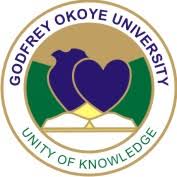• Biofilms: Quorum sensing and stages of biofilm formation Medical importance of Biofilms
- Quorum sensing in Gram negative bacteria
Microorganisms make significant impact on their immediate environment when they are sufficiently numerous. The microbial cell mass regulates a substantial number of different activities through cell to cell communication amongst the organisms. When the cell mass is achieved, the organisms are said to have formed a quorum.
Quorum sensing is a signaling system among microorganisms which is achieved when an appropriate concentration of signal producers called autoinducer is reached due to high cell density. Some of the reactions regulated by quorum sensing include bioluminescence, biofilm production, conjugation, sporulation, production of antibiotics etc.
Both gram positive and Gram-negative organisms produce the chemicals transmitters called autoinducers.
The autoinducers responsible for quorum sensing in Gram negative organisms is an Acylated Homoserin Lactone (AHL) synthesized by a Lux I type enzyme. It is synthesized within the cytoplasm and it diffuses through the cytoplasmic membrane so that it is present within and outside of the cell. When a stimulatory level of the autoinducer is achieved, it binds to a Lux- R type protein and the Lux R- AHL complex formed binds to promoters which activiate the genes responsible for the mediation of quorum sensing activities. This mechanism is uniform for all Gram negative organisms in which quorum sensing of one type or the other can be demonstrated and these organisms differ only in the acyl chain moiety attached to the autoinducer. Each chain is highly selective for its AHL signal molecule so that the moiety of one organism doea not trigger off quorum sensing in another organism.
Stages in biofilm formation
- Bacterial attachment to a surface
- Microcolony formation
- Biofilm maturation
- Detachment- dispersal to new areas
Effect of biofilm formation
- Higher resistance to antibiotics and detergents
- Poor antibiotic penetration
- Causes dental plague
- Scum in water
Mode of action in quorum quenchimg
- Enzymes inactivation of quorum sensing signals system: quorum sensing signal cleavage
- Chemical disruption of quorum sensing pathway- competitive inhibition
- Physical parameters
